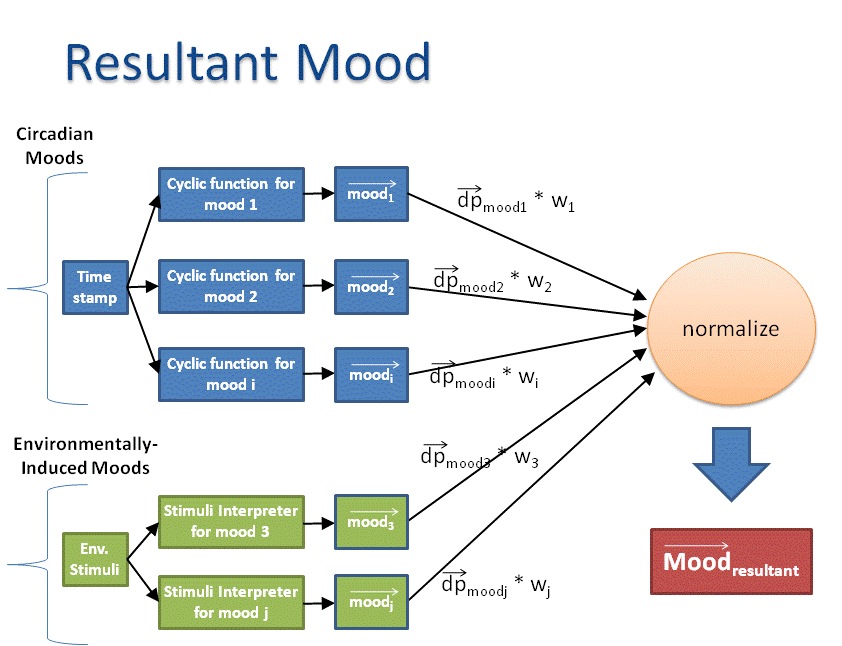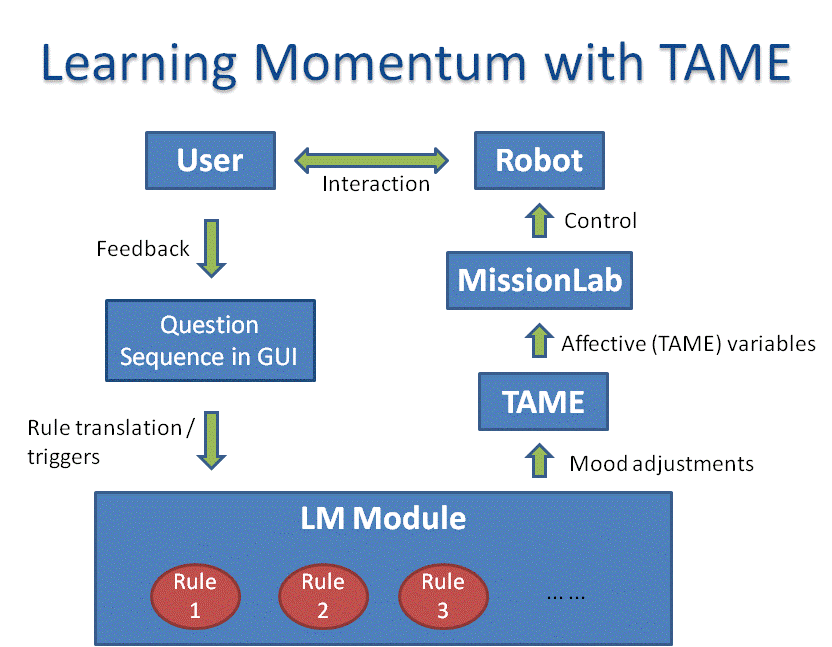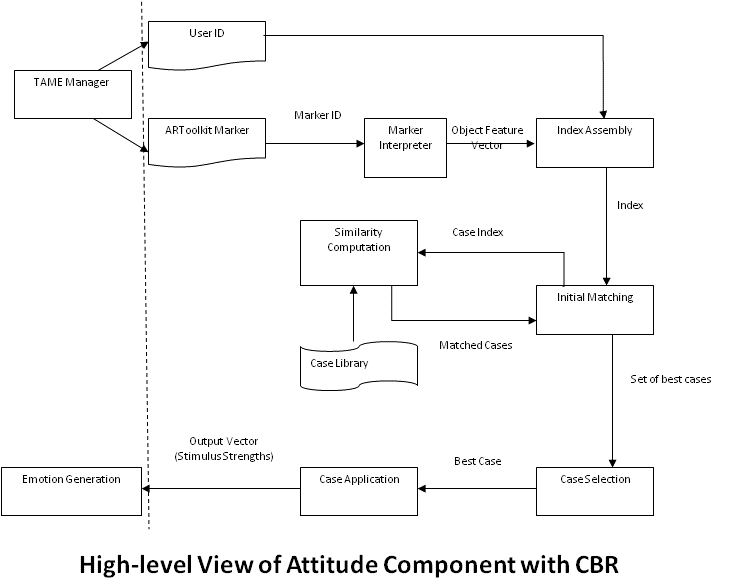Traits, Attitudes, Moods, and Emotions time-varying affective control model for humanoid robotic systems
Ronald C. Arkin
Project link
Georgia Tech PI: Ron ArkinStudents: Lilia Moshkina, Sung Hyun Park, and HyunRyong Jung
Samsung Technical POC: Byungchull Bae
Project Goals
This project is now well into its second year and focuses this year on integrating machine learning into two of TAMEs affective components, attitudes and moods, with the application of reinforcement learning (learning momentum specifically) and case-based reasoning to each respectively.
Project Details
Moods and Learning Momentum
The purpose of this research is to be able to entrain a user's moods with a humanoid robot via repeated interactions over long periods of time. The figures below illustrate how moods are represented in TAME and how learning momentum interacts with the TAME component.


The rules, based on reinforcement derived from the user provide alteration of the base mood values and alter the robots behavior accordingly (below)

Attitudes and Case-based Reasoning
For this part of the project, attitudes towards environmental objects affect the state of the robot and its behavior. Cases are used to capture that state.

Similarity metrics are used to generalize from previously encountered objects to novel ones, making assumptions that previous attitudes from related objects yield similar ones to those newly encountered.
Research Artifacts
- Paper submitted to International Conference on Virtual Agents (IVA-2010), “Reusable Affective Software Architecture for Humanoid Robots and Virtual Agents”, HyunRyong Jung, Lilia Moshkina, Hyun-Jin Choi, Jamee Lee, and Ronald Arkin, September 2010.
- Invited talk to be given at Robotics Systems and Science (RSS-2010) Workshop on Learning for Human-Robot Interaction, Ronald Arkin, June 2010.
- US-Latin American Workshops on Robotics Cooperation, "Towards Life-long Human-Robot Partnerships: Behavioral Development for a Humanoid Robot", invited talks, University de la Republica, Montevideo, Uruguay, and University of Chile, Santiago, Chile, November 2009.
- Moshkina, L., Arkin, R.C., Lee, J., and Jung, H., 2009. "Time Varying Affective Response for Humanoid Robots", Proc. International Conference on Social Robotics (ICSR 09), Seoul, KR, Aug. 2009.
- Moshkina, L. and Arkin, R.C., 2009. "Beyond Humanoid Emotions: Incorporating Traits, Attitudes, and Moods", Proc. 2009 IEEE Workshop on Current Challenges and Future Perspectives of Emotional Humanoid Robotics, Kobe, JP, May 2009.
